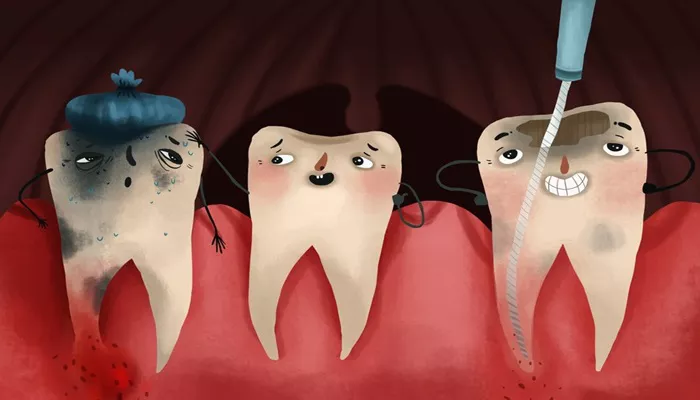Dental implants are popular and effective solutions for replacing missing teeth. They look natural, restore function, and last for many years. However, like natural teeth, they are not immune to infection. Recognizing what an infected implant looks like is essential for timely treatment and long-term oral health.
When a dental implant becomes infected, the surrounding tissue may become inflamed, swollen, and painful. Ignoring these signs may lead to serious consequences such as implant failure or jawbone loss.
What Causes a Dental Implant Infection?
A dental implant infection, often referred to as peri-implantitis, occurs when bacteria invade the soft and hard tissues around an implant. This can lead to inflammation and destruction of the bone supporting the implant.
Common Causes Include:
- Poor oral hygiene
- Smoking
- Pre-existing gum disease
- Excessive biting force on the implant
- Improper placement of the implant
- Uncontrolled diabetes or systemic illness
Visible Signs of an Infected Implant
Knowing the signs of an infected dental implant helps in seeking prompt dental care. Here are the most common symptoms to watch for:
1. Bleeding Gums Around the Implant
Healthy gums should not bleed easily. Bleeding gums around the implant, especially when brushing or flossing, is a warning sign of inflammation. This could be an early stage of peri-implant mucositis, a reversible condition if treated early.
2. Redness and Swelling
Infected gums often appear red, swollen, and tender. This inflammation may spread, affecting nearby teeth and gums. In severe cases, pus may also be visible.
3. Receding Gums
Receding gums expose the implant structure, making it more vulnerable to bacteria. This may give the appearance of a longer implant crown or metal becoming visible.
4. Bad Breath or Unpleasant Taste
A persistent bad smell or taste in the mouth may indicate pus drainage from the infection. This symptom usually accompanies more advanced infections.
5. Pain or Discomfort
Pain is not common in healthy implants. A throbbing or persistent ache may indicate inflammation or bone loss. This discomfort may be mild or intense, especially when biting or chewing.
6. Loose Implant
One of the most alarming signs is implant mobility. A loose dental implant usually signifies advanced bone loss. Immediate dental attention is needed to assess and possibly remove the implant.
Stages of Dental Implant Infection
Early Stage: Peri-Implant Mucositis
This is a mild infection affecting only the soft gum tissue. Symptoms include bleeding and slight swelling. At this stage, the bone is still intact, and the condition is reversible with proper care.
Advanced Stage: Peri-Implantitis
This is a severe form of infection where the bone around the implant begins to deteriorate. Symptoms include deep gum pockets, pus discharge, receding gums, and implant mobility. If left untreated, the implant may fail.
Risk Factors That Increase the Chance of Infection
While anyone can develop an infected implant, some factors increase the risk:
- History of periodontal disease
- Inadequate oral hygiene practices
- Chronic illnesses such as diabetes
- Use of tobacco products
- Poor-fitting prosthetics
- Lack of regular dental check-ups
Diagnosis of an Infected Implant
Your dentist will perform a thorough examination to confirm the infection. Diagnosis typically includes:
- Visual inspection of bleeding gums and swelling
- Probing around the implant for pocket depth
- Radiographic imaging to check bone loss
- Checking for implant mobility
Early diagnosis is essential for preserving the implant and preventing the spread of infection.
Treatment Options for Infected Dental Implants
Non-Surgical Treatment
If the infection is detected early, non-surgical interventions may be effective:
- Professional dental cleaning
- Antimicrobial mouth rinses
- Antibiotic therapy
- Laser therapy to reduce bacteria
Surgical Treatment
For advanced peri-implantitis, surgical options may be necessary:
- Flap surgery to clean infected tissue
- Bone grafting if bone has been lost
- Implant removal in case of severe infection
The earlier the infection is addressed, the greater the chance of saving the implant.
How to Prevent Implant Infection
Maintain Excellent Oral Hygiene
Brush twice daily and floss at least once per day. Use a soft-bristled toothbrush and non-abrasive toothpaste. Consider using a water flosser for hard-to-reach areas around implants.
Attend Regular Dental Check-Ups
Professional cleanings and evaluations help detect early signs of trouble. Your dentist can remove plaque and monitor for early bleeding gums or gum recession.
Avoid Smoking
Smoking impairs healing and reduces blood flow to the gums. It significantly increases the risk of receding gums and implant failure.
Manage Systemic Conditions
Control underlying conditions such as diabetes to enhance immune response and healing capacity.
When to See a Dentist
If you notice any of the following signs, contact your dentist immediately:
- Persistent pain or swelling
- Bleeding gums near the implant
- Visible receding gums
- Loose or shifting implant
- Unusual taste or odor in your mouth
Conclusion
A dental implant infection can be a serious problem, but early detection and proper treatment often lead to full recovery. Pay close attention to symptoms such as <strong>bleeding gums</strong>, <strong>receding gums</strong>, swelling, and discomfort. Maintaining good oral hygiene, managing health conditions, and attending regular dental visits are the best ways to prevent implant infection.

